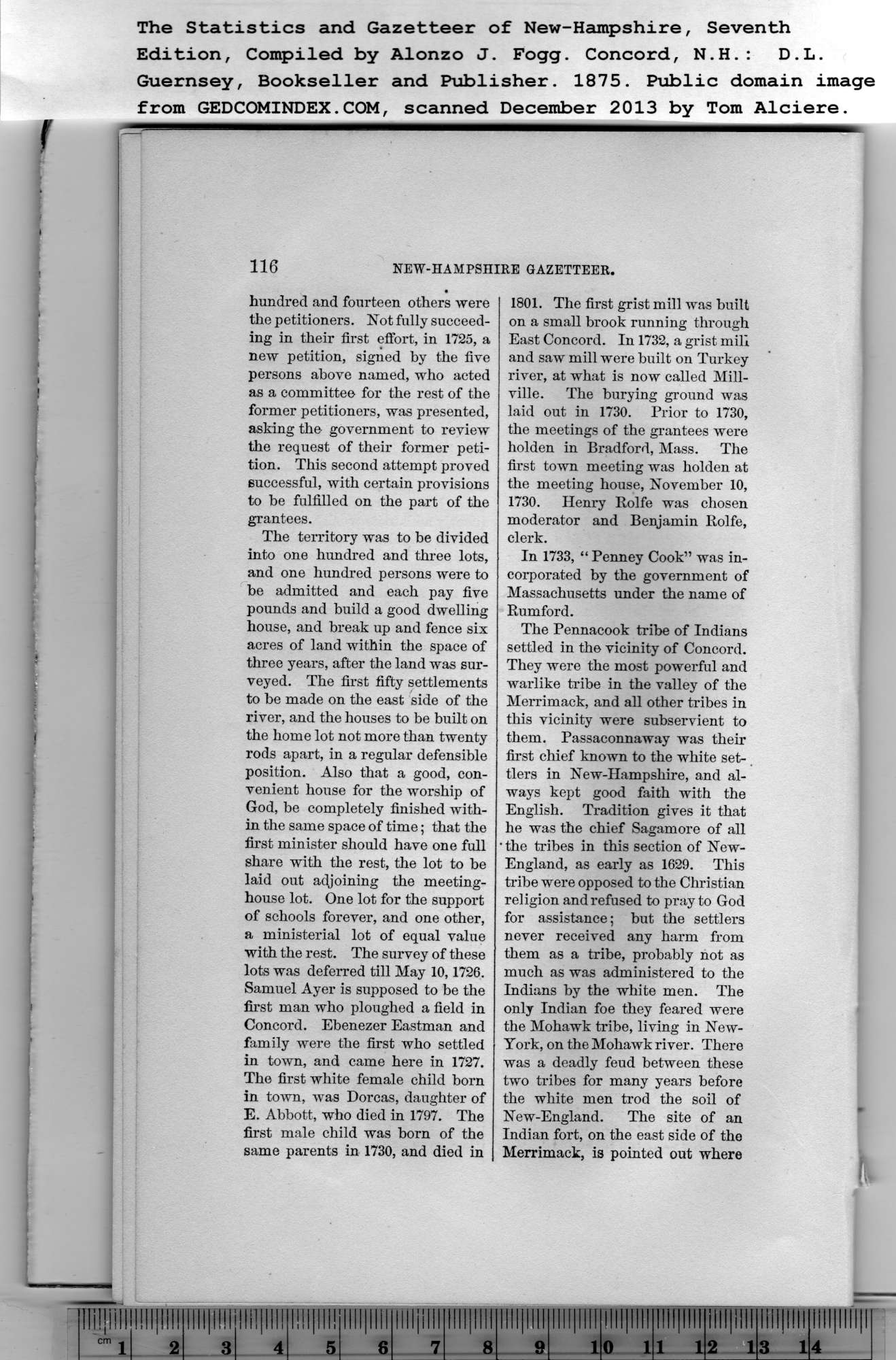|
hundred and fourteen others were
the petitioners. Not fully succeed-
ing in their first effort, in 1725, a
new petition, signed by the five
persons above named, who acted
as a committee for the rest of the
former petitioners, was presented,
asking the government to review
the request of their former peti-
tion. This second attempt proved
successful, with certain provisions
to be fulfilled on the part of the
grantees.
The territory was to be divided
into one hundred and three lots,
and one hundred persons were to
he admitted and each pay five
pounds and build a good dwelling
house, and break up and fence six
acres of land within the space of
three years, after the land was sur-
veyed. The first fifty settlements
to he made on the east side of the
river, and the houses to be built on
the home lot not more than twenty
rods apart, in a regular defensible
position. Also that a good, con-
venient house for the worship of
God, be completely finished with-
in the same space of time; that the
first minister should have one full
share with the rest, the lot to he
laid out adjoining the meeting-
house lot. One lot for the support
of schools forever, and one other,
a ministerial lot of equal value
with the rest. The survey of these
lots was deferred till May 10,1726.
Samuel Ayer is supposed to be the
first man who ploughed a field in
Concord. Ehenezer Eastman and
family were the first who settled
in town, and came here in 1727.
The first white female child born
in town, was Dorcas, daughter of
E. Abbott, who died in 1797. The
first male child was horn of the
same parents in 1730, and died in
1801. The first grist mill was built
on a small brook running through
East Concord. In 1732, a grist mill
and saw mill were built on Turkey
river, at what is now called Mill-
ville. The burying ground was
laid out in 1730. Prior to 1730,
the meetings of the grantees were
holden in Bradford, Mass. The
first town meeting was holden at
the meeting house, November 10,
1730. Henry Rolfe was chosen
moderator and Benjamin Rolfe,
clerk. |
In 1733, “ Penney Cook” was in-
corporated by the government of
Massachusetts under the name of
Rumford.
The Pennacook tribe of Indians
settled in the vicinity of Concord.
They were the most powerful and
warlike tribe in the valley of the
Merrimack, and all other tribes in
this vicinity were subservient to
them. Passaconnaway was their
first chief known to the white set-
tlers in New-Hampshire, and al-
ways kept good faith with the
English. Tradition gives it that
he was the chief Sagamore of all
the tribes in this section of New-
England, as early as 1629. This
tribe were opposed to the Christian
religion and refused to pray to God
for assistance; but the settlers
never received any harm from
them as a tribe, probably not as
much as was administered to the
Indians by the white men. The
only Indian foe they feared were
the Mohawk tribe, living in New-
York, on the Mohawk river. There
was a deadly feud between these
two tribes for many years before
the white men trod the soil of
New-England. The site of an
Indian fort, on the east side of the
Merrimack, is pointed out where |
